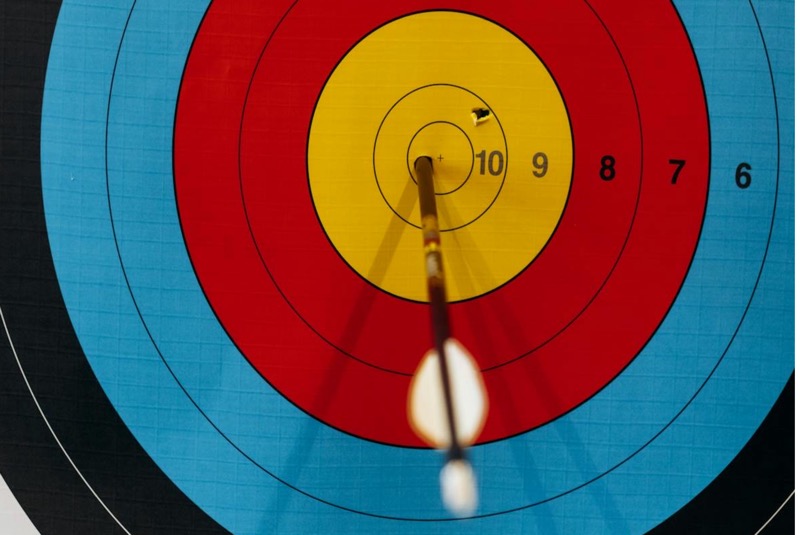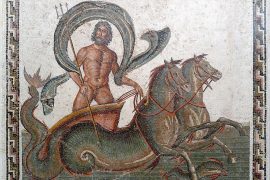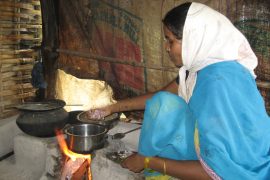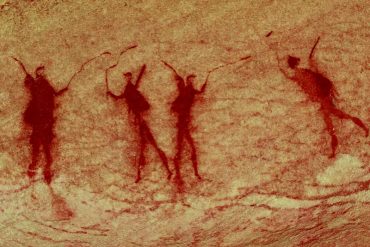Every afternoon, at about 3 p.m., traffic bogs down on Shillong’s narrow MC Road near 4th Furlong. Some search for a parking spot, while others go through an inconspicuous hole in the wall leading to the local archery stadium. Dozens of tiny booths seem to offer lottery tickets.
The Shillong Daily Teer lottery is the sole legal form of gambling in the Indian state of Meghalaya. It contributes to the survival of the old, heavenly art of archery.
Teer, the Hindi word for “arrow,” is a near-daily pastime in Shillong—a game of chance based on a talent that Meghalayans have mastered for centuries: archery. Betting people choose a number between one and 99; professional archers take their target, and you win if the last two digits of the total number of arrows that strike the target match your number.
“Archery actually has ancient roots in the Khasi community, with several popular tales and myths around this sport,” says Professor Desmond L Kharmawphlang. At Shillong’s North-Eastern Hill University, Kharmawphlang is the Head of the Department of Cultural and Creative Studies.
Kharmawphlang narrated the legend, according to which archery was gifted by the gods to the Khasi tribe of Meghalaya. It was received by Ka Shinam, also known as the “reigning goddess,” who handed the bow and arrows to her sons U Shynna and U Batiton, who practised with these weapons and eventually became excellent marksmen.
Archery has long been a favourite sport of the state’s Khasi people. Each town of the state sends its finest archers for a friendly competition known as U Thingiong U Thingsaw. Some contests are conducted on certain occasions and in remembrance of Meghalaya’s independence warriors.
In April 1829, the warrior king U Tirot Sing Syiem led an army of archers to defend the northeast provinces against the invading British. They beat them with just bows and arrows. Even though U Tirot Sing Syiem was ultimately defeated and captured after the British successfully seized control of the area, he is regarded as one of the region’s most fearless independence fighters.
The Khasi tribe has a ritual that honours archery among males. Khasi boys are taught art at an early age. When a Khasi boy is born, a ritual known as ka jer ka thoh is performed. According to Kharmawphlang, It is a naming ceremony that includes putting a bow and three arrows in front of the newborn, symbolising his duty as a warrior and defender.
A warrior’s land is represented by the first arrow, his clan by the second, and himself by the third. The arrows are kept securely within his house when the child grows old. On the day he passes, the same bow is put next to his corpse, and the arrows are shot to accompany his spirit to heaven.
The usage of the bow and arrow decreased when Meghalaya was integrated into independent India. Archery became purely a recreational sport. However, the sport kept gaining popularity in the state, and archery clubs emerged and began competing against one another.
Shillong and other villages across the state hold major contests, and contestants travel from all over the area to participate. Winners get monetary awards and, in some instances, business sponsorship opportunities.
One of the most heated rivalries involving money was played out between the villages of Laitryngew and Mawthohtieng near Sohra Rim, which continues to this day. The earliest recorded instance of gambling goes back to 1952-53.
Gambling was originally banned by the state government of Assam (Meghalaya was part of it) when archery became increasingly popular in the 60s. According to Philip G Khongsngi, the president of Khasi Hills Archery Sports Institute (KHASI), the police were even commissioned to arrest bookies.
The Archery Board Control (ABC), which is now known as the Khasi Hills Archery Sports Institute (KHASI), controlled the 12 operational clubs at the time. Archery contests were conducted regularly at different locations. However, all betting took place underground. The practice continues to this date in areas of Assam and Tripura, where betting on sports is still prohibited. After Meghalaya was recognised as a distinct state in 1972, KHASI worked with the government to legalise betting, but it wasn’t until a decade later, on October 1, 1982, that the idea was accepted.
Today, Shillong’s streets are crowded with betting kiosks for this type of lottery, known locally as Siat Khnam. Shillong’s old polo field, which now houses the KHASI, has turned into a hive of activity. Teer adds to the state’s economy, with hundreds of people coming to Shillong’s polo field to witness the show in the afternoons.
Before beginning a business, each bookie must get a government licence. According to local official estimates, there are around 5,000 bookies in Meghalaya, with 1,500 only in Shillong. The lowest bet is documented in a pamphlet distributed by the government. There is no limit to the number of bets, and the business is estimated to generate Rs 500 crore in daily transactions. Beginning with 1 rupee, betters can gamble up to 500 rupees. Winners may see their money increased to 80 rupees for every rupee originally waged.
According to Kharmawphlang, the government’s interest in teer has resulted in organised clubs, bringing discipline and training into archery. For the same reason, it is becoming popular among young people from many regional groups apart from Khasis. Speaking to a news outlet, a bookie said that the bets come from all around the world and are regulated over the internet and mobile networks.
There are archery clubs, and each club in the league plays two games each week. The clubs generate their money by collecting money at the counters, and they employ around 13 archers who earn up to Rs 350 per day. Individual archers may also win cash on the spot if they strike the target.
Teer has become a daily tradition among people in Meghalaya, and legalised betting draws huge crowds. It has brought a huge market, not just to the archers and bookies, but also to local pan shops and tea sellers. People gather at the grounds where kiosks accept bets, and local vendors get a daily brisk business selling chai, snacks, tobacco, and betel nuts as the spectators and archers wait for 3:15 action every day. It is a festive daily event that occurs across Meghalaya and keeps the sacred archery traditions alive.
-30-
Copyright©Madras Courier, All Rights Reserved. You may share using our article tools. Please don't cut articles from madrascourier.com and redistribute by email, post to the web, mobile phone or social media.Please send in your feed back and comments to [email protected]











